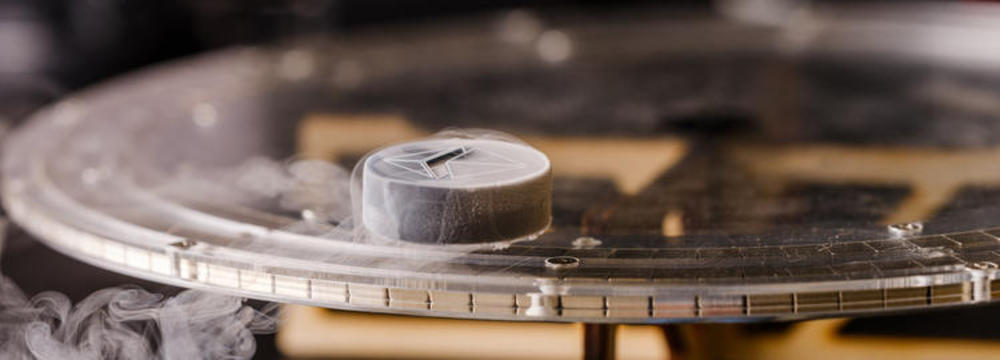PhD student Vadiraj Ananthapadmanabha Rao has a small music studio at home. There, he creates music and records covers of his favourite songs. He especially likes to sing songs from other languages. It gives him a feel for the culture, he says, and allows him to feel immersed in something new and different.
The time he spends at IQC is also dedicated to exploring something new. “The field of quantum physics is still in its early stages, and that’s what makes investigating this field so exciting. Everything is new.”

Creating qubits

“I study the physical effects predicted by theory,” explains Rao, an Electrical and Computer Engineering student. “In the quantum world, we look at the smallest unit of matter: individual atoms. [In my lab,] we work with artificial atoms, and this gives us the advantage of engineering different aspects of each one.”
![individual atoms. [In my lab,] we work with artificial atoms, and this gives us the advantage of engineering different aspects of each one.](/institute-for-quantum-computing-impact-report/sites/ca.institute-for-quantum-computing-impact-report/files/uploads/images/vadiraj_quotes-07.jpg)
The atoms used in the EQS Lab are superconducting electrical circuits, consisting of capacitors that store electrical energy in an electric field, and inductors that store energy in a magnetic field when electric current flows through it. The integral part of the circuit is a tiny device called a Josephson junction, a type of nonlinear inductor.
“We build superconducting qubits using these artificial atoms,” said Rao. The Josephson junction-based circuit is the basic element that goes into all of the devices engineered in the EQS Lab. The superconducting qubits behave as two level systems and, thanks to quantum mechanics, can be in a superposition of states—both 0 and 1—at the same time. This ability gives qubits in superposition robust processing power.
“The interesting question becomes: what can we do with this?”

Quantum avant garde
Harnessing the effects of light-matter interactions can be useful in processing quantum information—a task at the heart of many quantum technologies like quantum computers and quantum simulators. Superconducting circuits also have applications in current technologies, like sensors and radar, to improve sensitivity and detectability.
What’s most fascinating for Rao, though, is the investigation of a new area of quantum optics. His research pushes boundaries to demonstrate new physics phenomena. For example, expanding a two-level qubit to a three-level qubit system could uncover new technological possibilities beyond the imagination.
The exploration of this unchartered territory of physics is as intriguing for Rao as learning a new language through music. In his home studio, he experiments with tune and pitch to capture a precise emotion with music. In the lab, he tunes the properties of atoms to see different effects of the interaction between light and matter.
Whether it’s the creation of music or the construction of a new quantum technology, Rao is a seeker: the process, experimental, and the results, intriguingly beautiful.







